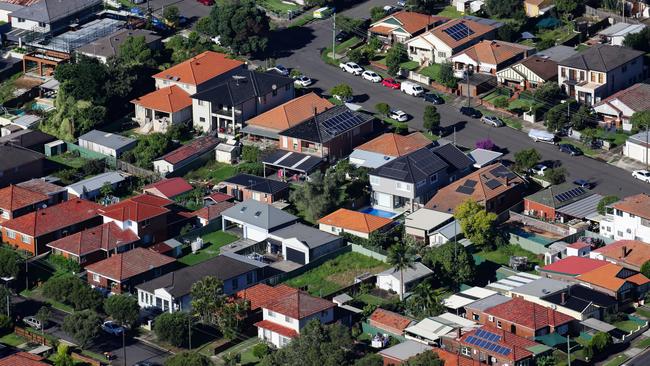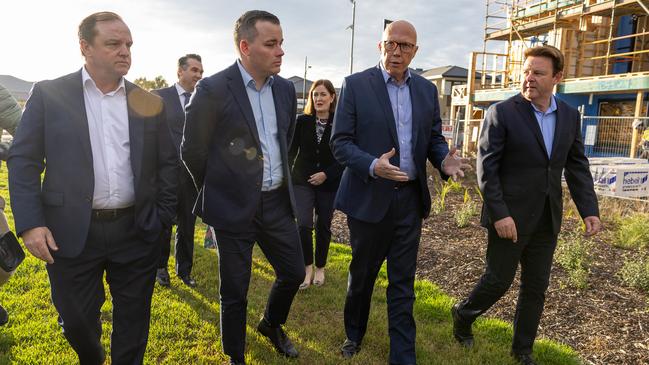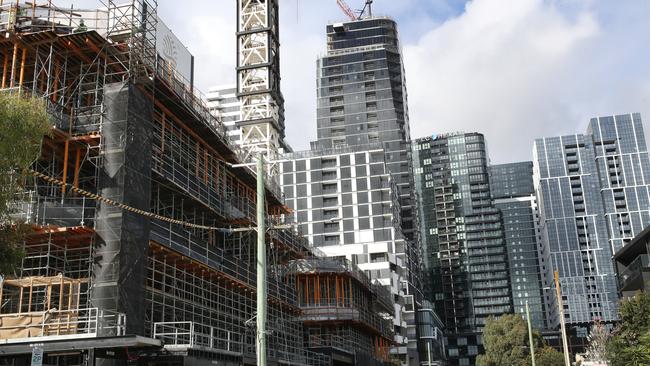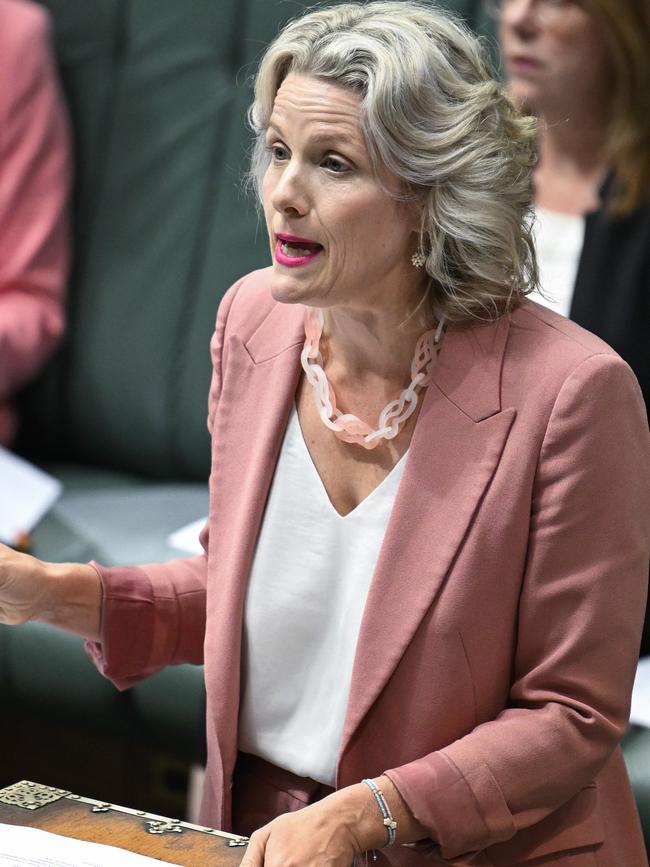
The tariff news from the US has drowned out a great deal of the coverage of the federal election campaign. Even so, the main political issues of the campaign – cost of living and housing – remain key considerations for many voters.
When it comes to housing, it’s easy to conclude that most government interventions to fix the problems people are encountering are ineffective and expensive. In many instances, the actions undertaken make matters worse.
Let’s start with some basics. The first is the balance between demand and supply. With demand allowed to increase rapidly on the back of rapid immigration after the pandemic, problems were always likely to emerge.
It was at this point that federal and state governments sat on their hands. Simply setting a five-year target for new homes achieves virtually nothing. From mid-2024 the Albanese government, in partnership with state and territory governments, has had a target for the construction of 1.2 million well-located homes. We are already behind the required run rate and it seems unlikely that this high number will be achieved. It would be five years of the highest annual home building completions ever achieved.
When it comes to supply, the bureaucratic analysis is often simplistic and misleading. Note, for instance, the reference to homes, which covers detached houses to tiny apartments in high-rise buildings. As far as bureaucrats are concerned, they are all places to live.

There is also the issue of the location of these homes, their access to transport and the availability of essential infrastructure. There’s no point lobbing a new housing development on the outskirts of the large cities if it is not connected to transport. Residents of some of the new housing developments on the edge of Melbourne are spending inordinate lengths of time – more than one hour – just to get on to the nearest arterial road.
Even so, it’s clear most first-home buyers, particularly those with young families, prefer to purchase a stand-alone house with a backyard. However, state governments, in particular, are keen to override these preferences, in part because they simply do not want to fund the required infrastructure (road, water, schools and so on).
There will be talk of ugly urban sprawl while ignoring the unattractiveness of poorly designed and badly built high-rise apartment blocks. The assumption that there is unused infrastructure in middle suburbs where state governments are insisting that high-density homes are constructed is highly questionable. But at least this involves lower housing-related outgoings for broke state (and local) governments.

In this context it is interesting to note the increasing proportion of unsold apartments in the parts of Melbourne designated for further high-rise developments – South Yarra, Box Hill, Footscray. The longer unsold stock remains on the market, the harder it becomes for developers to justify any new developments.
The truth is that most of these apartments simply are not suitable for family living – they have one or two bedrooms. The proportion of apartments with three or more bedrooms is tiny.
The almost religious fondness of the NSW and Victorian governments for high-density housing, particularly near railway stations, needs to be juxtaposed to the ongoing horror stories of defective buildings and egregious body corporate arrangements. Several feeble attempts have been made to deal with these problems but it’s unclear whether these new regulations will be effective.
It is a common proposition that the root of our housing problems is the failure of local governments to grant development approvals within reasonable timeframes and with minimal conditions. If the DA process could be made more efficient, the argument goes, then housing stock could be augmented quickly and shortages eliminated. If this involves riding rough-shod over existing residents or heritage overlays, so be it.
The reality is that the situation is more complicated, with many developers in Melbourne and Sydney reluctant to proceed with the DAs they have already received.
The only flourishing part of the market at the moment is high-end apartments in expensive suburbs suitable for wealthy downsizers. This is not a solution to the problem of affordable housing.
A central problem is the escalation in building costs, particularly of high-rise buildings. Since Covid, it is estimated that the construction costs per square metre have risen by as much as 25 per cent, reflecting higher labour and material costs. This tends to drive up the price of existing houses as potential buyers impute the current building costs to the accommodation available.
There is little prospect that building costs will abate soon. The shortage of building tradies as well as the infiltration of union/enterprise bargaining conditions across the industry mean home ownership will remain an unaffordable option for many people.
This brings us to government housing schemes that almost always act on the demand side. They include concessions on stamp duties, low-deposit loans and shared equity schemes.
One scheme that federal Housing Minister Clare O’Neil has been spruiking is the small-scale Help to Buy scheme. A target of 40,000 households a year to be helped into home purchase has been set. Sadly for O’Neil, shared equity schemes have a chequered history involving extremely high administration costs and problems across time.

The way these schemes work is the government typically takes a 40 per cent stake in the property but the owner is up for annual running costs, including council rates and maintenance. The owner pays mortgage costs on only the 60 per cent share and is relieved on buying lender’s mortgage insurance. There are strict income limits to qualify for the scheme.
The government agency often will check that the property is being maintained, and if the owner wants to undertaken any refurbishments or renovations they will need to seek the permission of some bureaucrat. If the value of the property declines, as was the case in Perth with a similar state scheme, multiple disputes emerge.
Given the choice between a low-deposit loan and a shared equity scheme in Victoria, most chose the former. No one wants Big Brother as a co-owner if they can avoid it. In fact, most people would prefer to access some of their own superannuation balance to contribute to a home deposit. To be sure, this is a demand-side measure, but so are most of the other ones being implemented by the federal and state governments.
There is also something to be said for revising conditions under which first-home buyers can secure loans, including sensitivity testing for increases in mortgage rates. What made sense when the case rate was 0.1 makes much less sense now the cash rate is 4.1. Making mortgage insurance transferable also should be allowed as this would enable mortgage holders to shop around for a better deal without having to pay mortgage insurance again.
Anyone who thinks our housing problems can be easily sorted out is living on another planet. Notwithstanding the suite of government programs on offer, the housing distress that far too many Australians experience won’t be disappearing soon.






